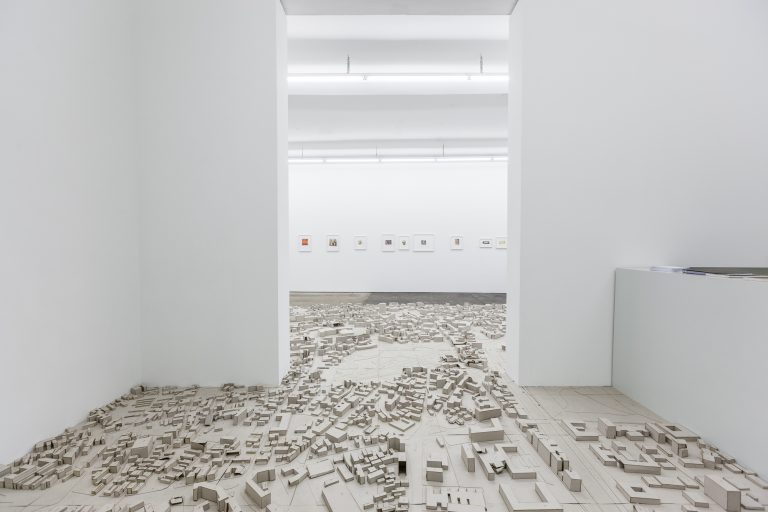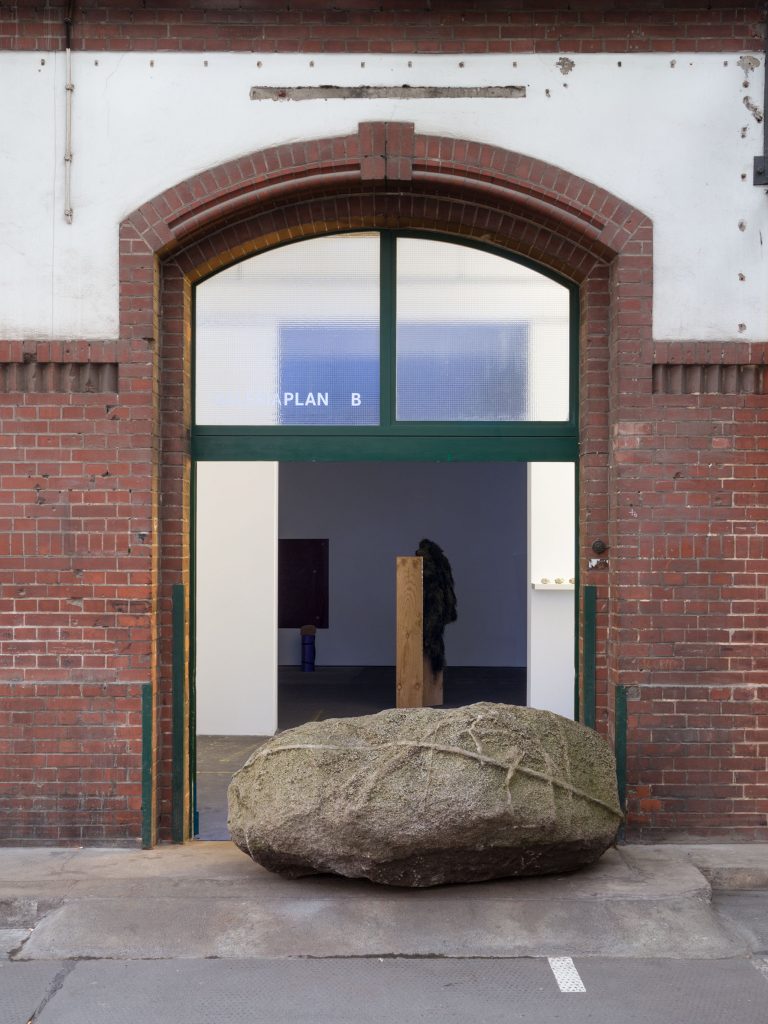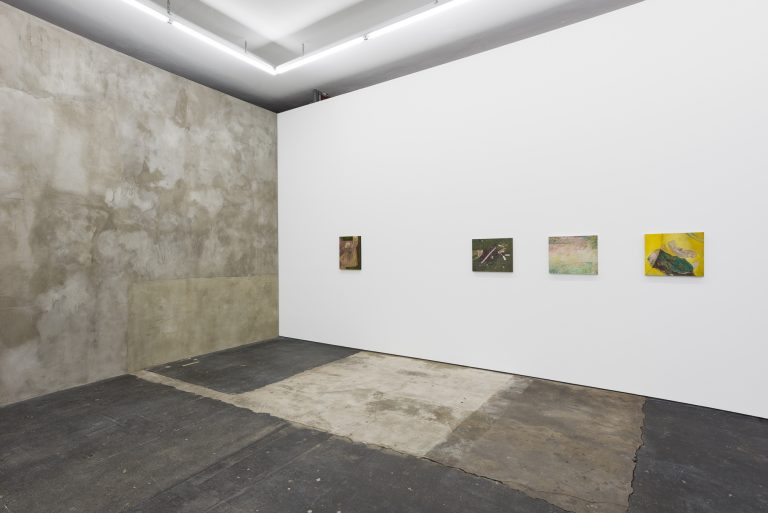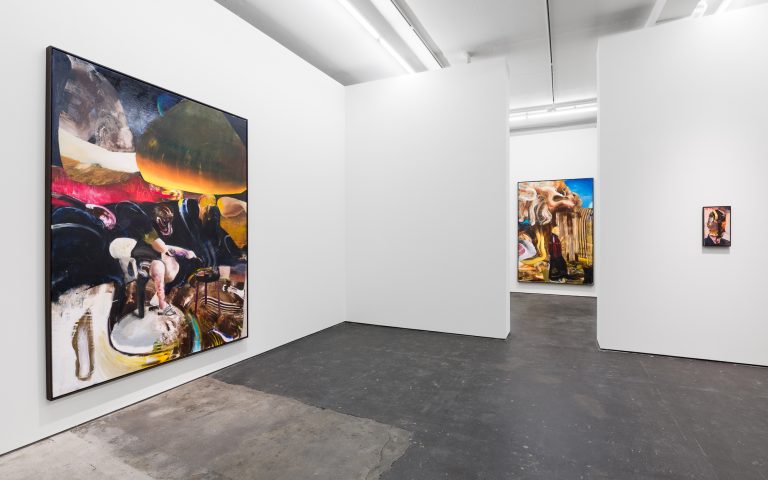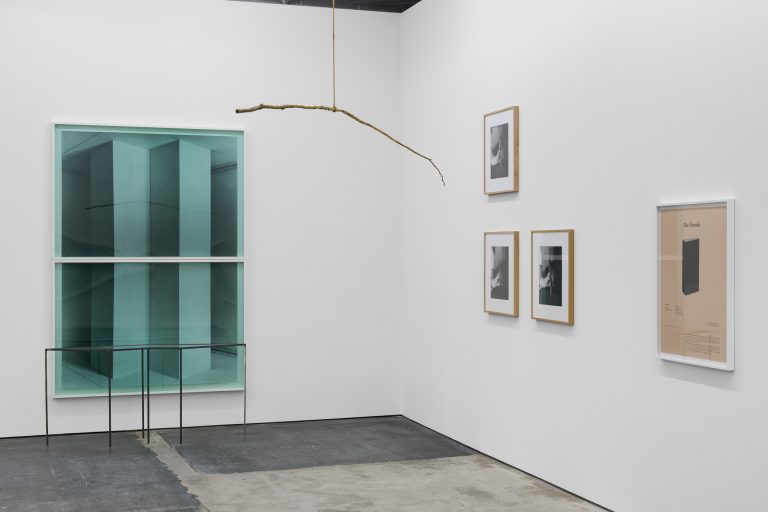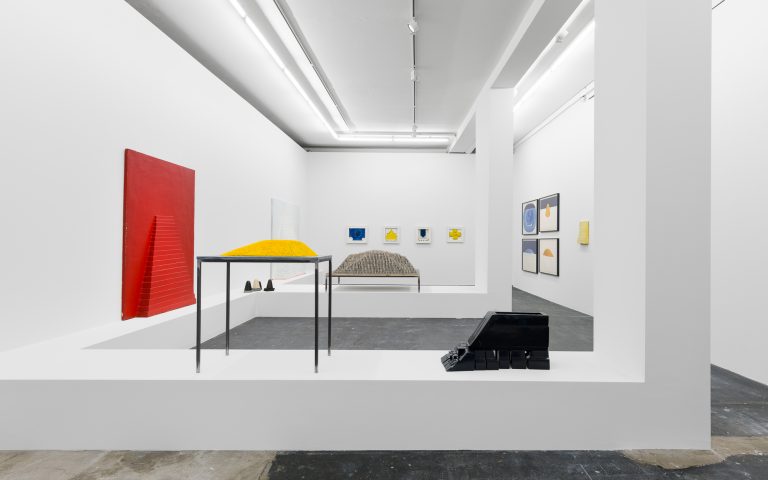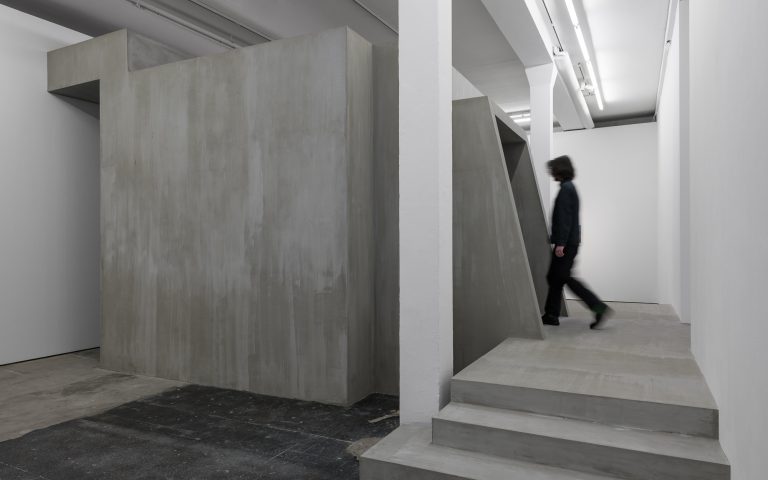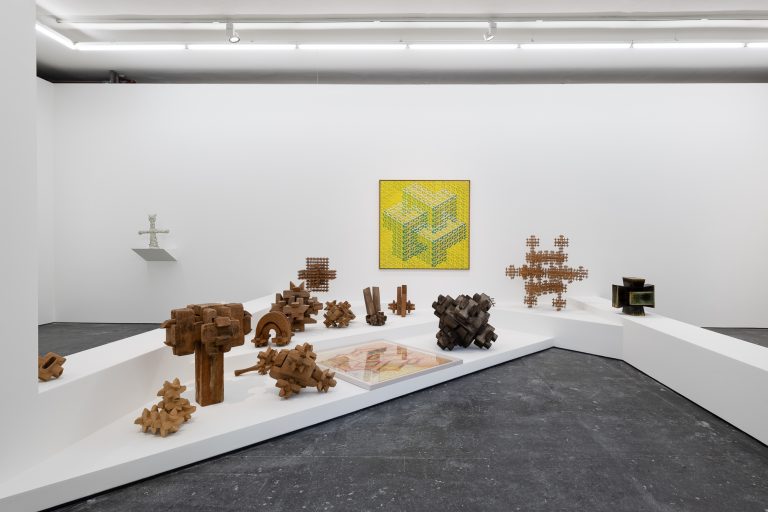Gallery portrait
Plan B
Beate Scheder, 2021
It is undeniable that gallery work requires considerable planning and foresight. In reality, however, it doesn’t take long for things to turn out differently than expected—and not just since the Covid-19 outbreak. Plan B Gallery’s Mihaela Lutea sees a lot of positives in the accidental, which often becomes a decisive factor: “What we are doing is actually an adventure. In the gallery, you never really know what is going to happen—that’s what is exciting about it.” Lutea is not only referring to the exhibitions that are created in collaboration with artists, but also to the gallery enterprise itself.
The adventure called Plan B started in 2005, in the Romanian city of Cluj. Located in the northwest of the country, in the region of Transylvania, Cluj was the breeding ground for a generation of Romanian artists that soon found success in the international art market, particularly but not only in the field of painting: Adrian Ghenie should be mentioned, as well as Victor Man, Ciprian Muresan, Serban Savu and many more. By the time they met again in their hometown, what they were still missing was a place to show their art.
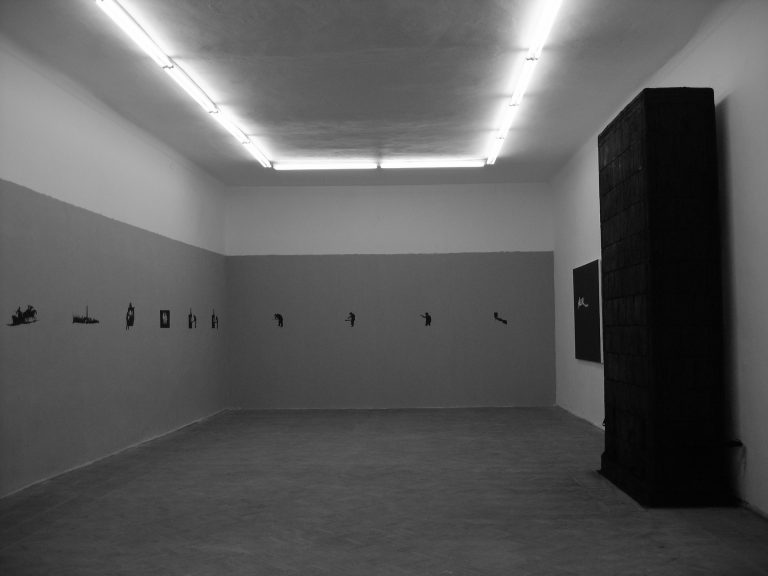
Exhibition View: Victor Man, Plan B, Cluj, 2005
First exhibition at Plan B
Mihai Pop, who to this day runs the gallery with Lutea, at Victor Man’s impulse teamed up with Adrian Ghenie to do something about it. They founded Plan B as an artist-run gallery—and at a “historically good moment,” as Lutea describes it. Even though there was a general interest in art from Eastern Europe, it was represented by very few galleries. From then on, everything happened quite quickly: Plan B participated in its first art fair, the Viennafair, not even a year after being founded. This was followed a few months later by the Armory Show in New York and Liste Basel.
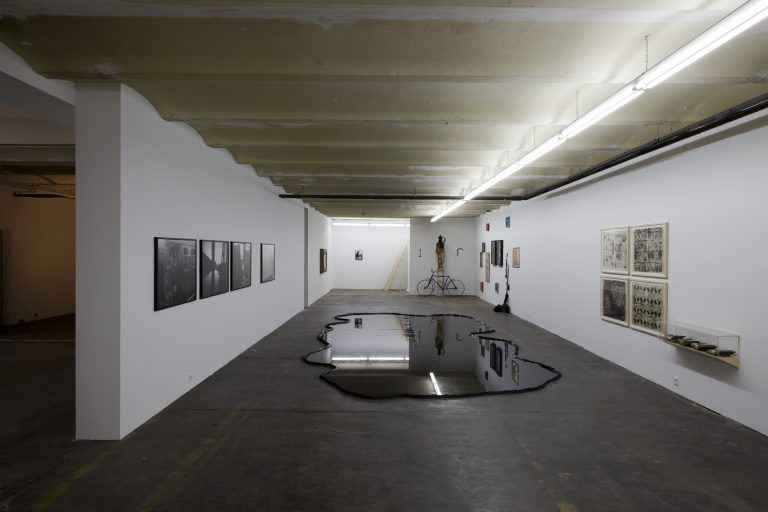
Exhibition view: When History Comes Knocking – Romanian Art from the 80s and 90s in close Up, Plan B, Berlin (Heidestrasse), 2010
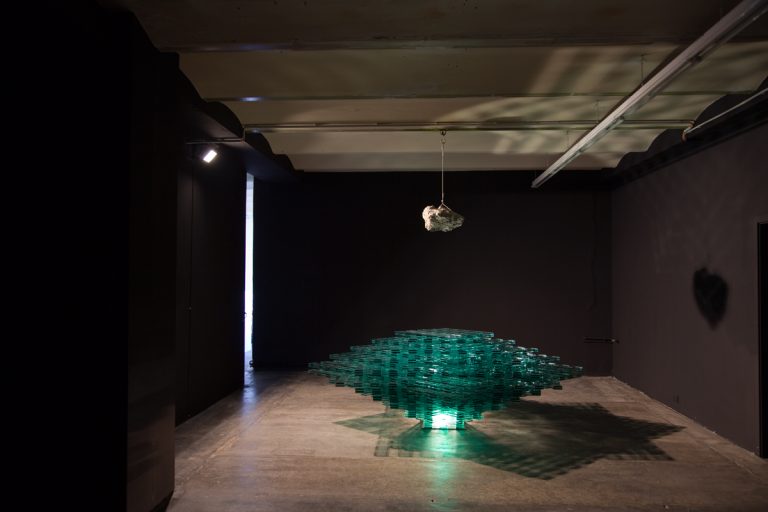
Exhibition view: Rudolf Bone – DICE, Plan B, Berlin (Heidestrasse), 2010
The next step had to be a second location in a European city with an active art scene. “At the time, Berlin was really the only option,” Lutea says. She jumped on the Berlin bandwagon herself. Lutea was still a student at Berlin University of the Arts (UdK) when she met Pop in Venice, and in 2008, when Plan B opened its first Berlin space on Heidestraße, where a large number of galleries and project spaces had settled by the end of the 2000s, she found herself already in a responsible position.
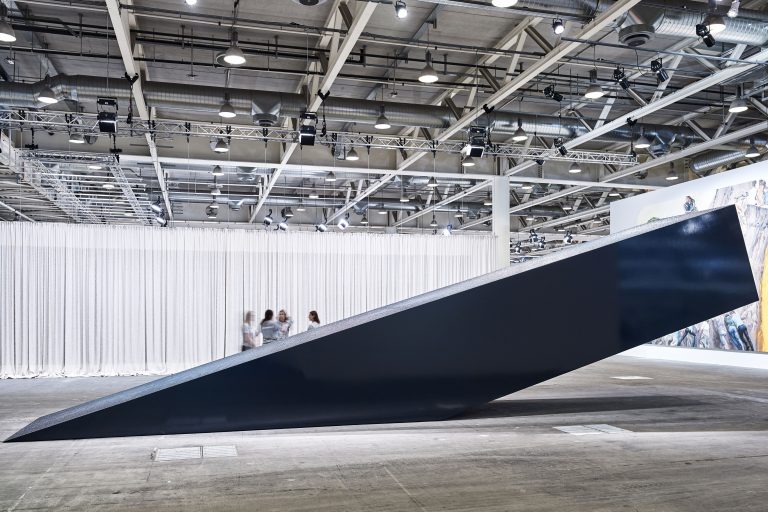
Horia Damian, GALAXY, Project for a monument in Houston, Texas, 1972-2018, Art Basel Unlimited, 2018
Soon a second focal point crystallized, which is now the core concern in Cluj: the study and preservation of the history of Romanian art in the last 60 years. One of the historical practices whose estate the gallery manages is, for instance, that of Horia Damian (1922-2012), whose cosmic and spiritually-charged sculptural work, often bearing monumental dimensions, was able to become more intimately known by an international audience thanks to Plan B. And in an impressive way: for Art Basel Unlimited, the gallery reconstructed a twelve-meter-tall sculpture from 1972. Lutea emphasizes that within such projects art history feels like a living archive.
Even today, most of the represented artists have Romanian roots, although not exclusively. Plan B wants to remain active, in motion, since “as a gallery, you are always reconsidering your program, negotiating between old and new realities.”
Zweifellos erfordert Galeriearbeit viel Planung und Vorausschau. In der Realität kommt dann aber doch schnell alles anders—nicht erst seit Ausbruch von Covid-19. Mihaela Lutea von der Galerie Plan B kann dem Zufall, der dabei oft zum entscheidenden Faktor wird, durchaus viel Positives abgewinnen: „Das, was wir machen ist eigentlich ein Abenteuer. Das ist das Spannende daran—in der Galerie weiß man nie so ganz, was daraus wird.“ Lutea meint damit die Ausstellungen, die in Zusammenarbeit mit den Künstlerinnen und Künstlern entstehen, aber auch das Unternehmen Galerie an sich.
Das Abenteuer namens Plan B begann im Jahr 2005 im rumänischen Cluj. Cluj, gelegen im Nordwesten des Landes, in der Region Transsilvanien hatte sich da bereits zum Nährboden für eine Generation rumänischer Künstlerinnen und Künstler entwickelt, die kurze Zeit später vor allem, aber nicht nur im Genre der Malerei auf dem internationalen Kunstmarkt reüssieren sollten: Adrian Ghenie ist hier zu nennen, Victor Man, Ciprian Muresan, Serban Savu und weitere mehr. Was ihnen damals, als sie sich in ihrer Heimatstadt wiedertrafen, noch fehlte, war ein Ort, um ihre Kunst zu zeigen.
Mihai Pop, der noch heute die Galerie gemeinsam mit Lutea leitet, tat sich, nach einem Impuls von Victor Man, mit Ghenie zusammen, um daran etwas zu ändern. Sie gründeten Plan B als Produzentengalerie – und das zu einem „historisch gesehen guten Moment“, wie Lutea es bezeichnet. Das Interesse an Kunst aus Osteuropa war da, doch es gab nur wenige Galerien, die solche vertraten. Und so ging alles ganz schnell: Noch nicht mal ein Jahr nach Gründung nahm Plan B an ihrer ersten Messe teil, der Viennafair. Ein paar Monate später folgten die New Yorker Armory Show und die Liste Basel.
Nächster Schritt sollte ein zweiter Standort in einer europäischen Stadt mit aktiver Kunstszene werden. „Infrage kam damals eigentlich nur Berlin“, sagt Lutea. Sie selbst stieg in Berlin mit ein. Lutea war noch Studentin an der UdK, als sie Pop in Venedig kennenlernte, und als Plan B 2008 an der Heidestraße, wo sich Ende der 00er Jahre eine ganze Reihe von Galerien und Projekträumen angesiedelt hatte, die ersten Berliner Räume eröffnete, schon gleich in leitender Position mit dabei.
Bald schon kristallisierte sich ein zweiter Schwerpunkt heraus, der heute vor allem in Cluj im Fokus steht: die Erforschung und Bewahrung der rumänischen Kunstgeschichte der vergangenen 60 Jahre. Horia Damian (1922-2012) ist beispielsweise eine der historischen Positionen, um deren Nachlass sich die Galerie kümmert und mit dessen kosmischen, spirituell aufgeladenen bildhauerischem Werk von oft monumentaler Dimension das internationale Publikum dank Plan B nähere Bekanntschaft machen konnte. Auf eindrucksvolle Weise: Für die Art Basel Unlimited rekonstruierten sie eine zwölf Meter lange Skulptur aus dem Jahr 1972. Wie ein lebendiges Archiv fühle sich Kunstgeschichte bei solchen Projekten an, betont Lutea.
Noch heute hat der Großteil der vertretenen Künstlerinnen und Künstler rumänische Wurzeln, doch nicht nur. Plan B möchte in Bewegung bleiben, denn: „Als Galerie verhandelt man sein Programm immer wieder neu, zwischen alten und neuen Realitäten.“

